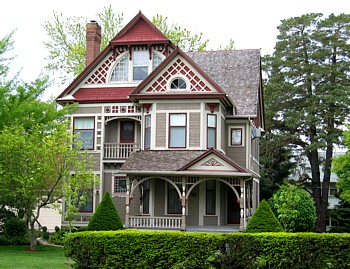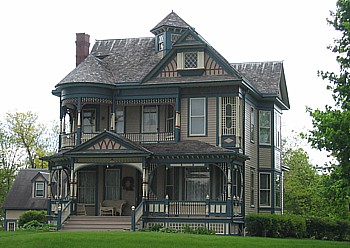

The Underground Railroad was a network of people who helped fugitive slaves escape slavery beginning in the late 1700s until the end of the Civil War in 1865. It spanned northern and southern states, stretching from Texas to Maine. Most fugitive slaves traveled from the Deep South to Canada, but a small number traveled south to Mexico and the Caribbean. During that time, assisting escaped slaves was considered an act of theft according to U.S. law since they were legally considered property. Anyone found guilty of assisting an escaped slave was subject to fine and imprisonment.
Prior to the American Revolution, slavery was legal in all parts of the British Empire. The war, however, followed the Enlightenment, where the concept of a person’s right to life, liberty and property was embraced and promoted. For blacks, these ideals would change their lives and many fought in the American Revolution, hoping these rights would be extended to them, too. For many American colonists, these ideals made them question the morality of slavery and gave rise to the abolitionist movement.
After the British were defeated, Vermont was the first to join the new United States of America with anti-slavery laws in 1777. Pennsylvania followed in 1780, and all northern states had abolished slavery by 1804. In addition, no laws in the newly formed United States required citizens to return escaped slaves to their owners. But concern for property rights led to laws ordering the return of fugitive slaves. In 1787, the Northwest Ordinance and Article IV, section 2 of the U.S. Constitution expressed similar positions on the matter. The Constitution, in what is commonly known as the “fugitive slave clause,” declared “No Person held to Service or Labour in one State, under the Laws thereof, escaping into another, shall, in Consequence of any Law or Regulation therein, be discharged from such Service or Labour, but shall be delivered up on Claim of the Party to whom such Service or Labour may be due.” The Fugitive Slave Act of 1793 reinforced this by giving slaveholders the right to reclaim escaped slaves and allowed courts to decide the status of fugitive slaves. The Fugitive Slave Act of 1850 went a step further and made helping fugitive slaves a federal crime punishable by fines or imprisonment. In some cases, people found guilty could also be charged with treason.
As the Underground Railroad network formed, people took on a variety of roles within the system. Station masters, for example, hid slaves in their homes or on their property, which was often referred to as a station or depot within the network. Fugitive slaves were usually referred to as passengers, cargo, fleece, or freight. Conductors were responsible for guiding fugitive slaves along the Underground Railroad routes or tracks. Others took a less active role. General agents, for example, connected fugitive slaves to people who could help them on the Underground Railroad and stockholders provided financial support to the Underground Railroad network.
Transportation methods varied between different locations and were based mainly on secrecy and proximity to slave catchers. In communities almost entirely opposed to slavery, fugitive slaves were usually transported during the day in covered wagons, hidden under hay or other goods. But most fugitive slaves moved at night, especially in communities that had mixed feelings about slavery. In these places, they stayed in near-constant hiding, often in fields or secret rooms in private homes. At night, conductors would move them to the next stop by walking or on horseback. Trains were also used, but this was less common because they were expensive and closely watched.
During this time, Iowa had a significant amount of Underground Railroad activity because of its geographic location to Missouri, a slave state to the south, and Illinois, a free state to the east. Additionally, the Missouri Compromise of 1820 said no state north of the 36°30′ parallel (besides Missouri) could enter the United States as a slave state. That meant Iowa would be a free state when it joined the Union in 1846. Not all settlers in Iowa viewed slavery as immoral, but many who did came from other free states or were often associated with specific religious communities, such as the Quakers and Congregationalists who openly opposed slavery.
Fugitive slaves usually passed through Iowa on their way to other free states farther north or to Canada where Britain would protect them from being recaptured. The majority of Underground Railroad activity in Iowa took place in Fremont and Mills counties, where fugitive slaves traveled from western Missouri. Southeastern Iowa also had many fugitive slaves from northeastern Missouri making their way to the Mississippi River and Illinois. By the 1850s, major Underground Railroad stations also popped up in western Iowa in Tabor and Civil Bend. Many Iowans also joined the growing political fight opposing the extension of slavery into the Kansas and Nebraska Territories, which eventually culminated in the Kansas-Nebraska Act of 1854 that repealed the Missouri Compromise and gave Kansas and Nebraska the right to determine their slave-holding status.
| IOWA UNDERGROUND RAILROAD | CLARKE COUNTY, IA |
| CONDUCTORS/STATION AGENTS | LOCATION |
| Gustin, William | Osceola |
| Gustin, Salina Dixon Harper | Osceola |
| Osmond, William R. | Hopeville |
| UNKNOWN STATUS | |
| Terrell, Edwin | Hopeville |
| Source: | |
| https://iowaculture.gov/sites/default/files/history-research-collections-ugrr-county-2.pdf | |
Here is a picture of a house in Osceola that has been rumored to be affiliated with the underground RR. I have no idea if that is true, but maybe someone can advise me on this and I will post it here. The house is located on west US 34 Hwy. There is also a carriage house in the rear.

It turns out that this house is a different house and is located on S Main street. It is unknown whether it was also involved in the Underground Railway, but I left it here in case someone can advise.

More on IOWA Underground RR.
source: https://iowaculture.gov/history/research/collections/places-people/underground-railroad-iowa
Return to History page
Return to HOME Page
Last Revised August 10, 2018